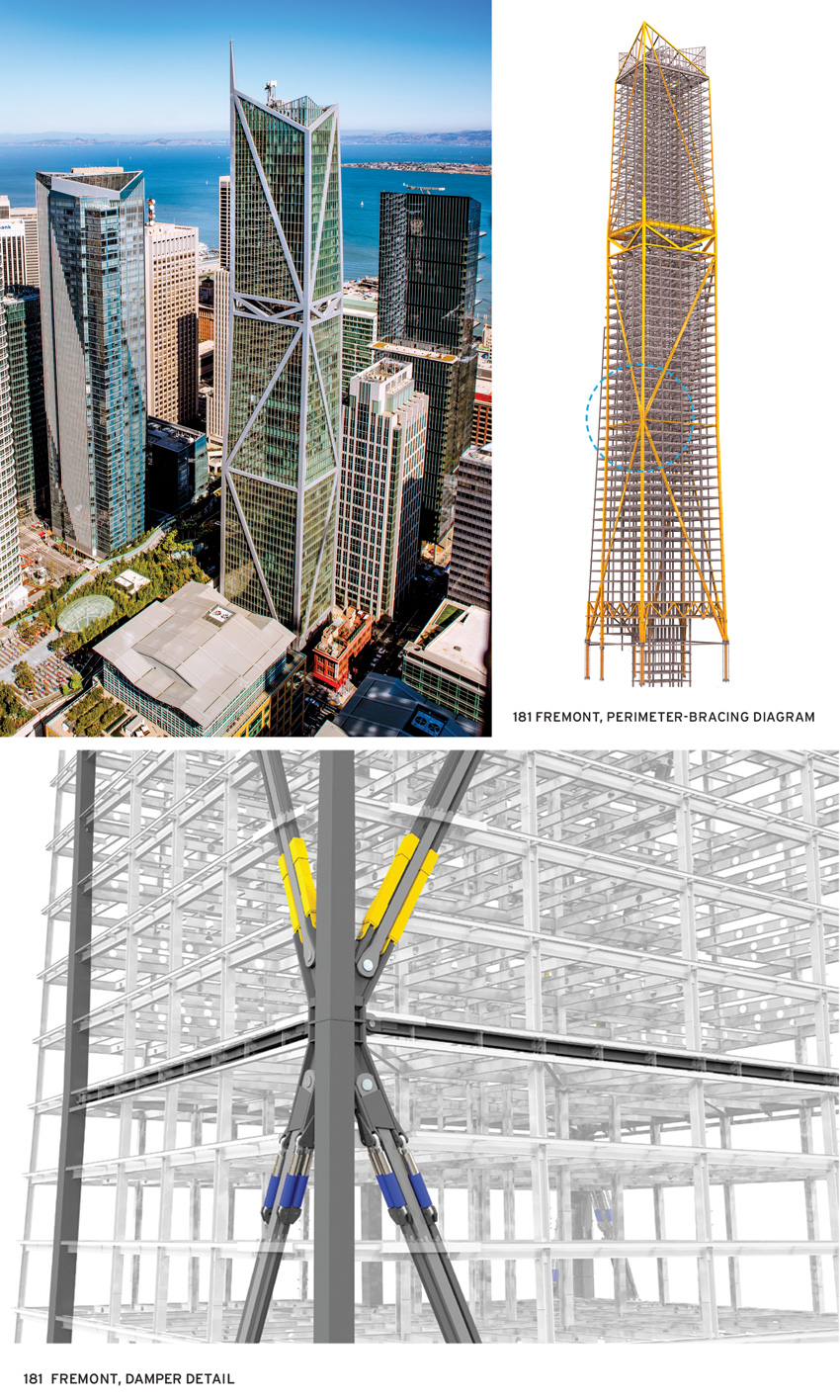Seismic Design
 1 AIA LU/HSW; 0.1 IACET CEU*; 1 AIBD P-CE; AAA 1 Structured Learning Hour; This course can be self-reported to the AANB, as per their CE Guidelines; AAPEI 1 Structured Learning Hour; This course can be self-reported to the AIBC, as per their CE Guidelines.; MAA 1 Structured Learning Hour; This course can be self-reported to the NLAA.; This course can be self-reported to the NSAA; NWTAA 1 Structured Learning Hour; OAA 1 Learning Hour; SAA 1 Hour of Core Learning
1 AIA LU/HSW; 0.1 IACET CEU*; 1 AIBD P-CE; AAA 1 Structured Learning Hour; This course can be self-reported to the AANB, as per their CE Guidelines; AAPEI 1 Structured Learning Hour; This course can be self-reported to the AIBC, as per their CE Guidelines.; MAA 1 Structured Learning Hour; This course can be self-reported to the NLAA.; This course can be self-reported to the NSAA; NWTAA 1 Structured Learning Hour; OAA 1 Learning Hour; SAA 1 Hour of Core Learning
Learning Objectives:
- Distinguish the performance objectives of code-compliant seismic design from those of resilient seismic design.
- Describe tools and standards that project teams can use to understand the trade-offs and risks implicit in seismic-design decisions.
- Explain how nonstructural components can contribute to or detract from seismic resilience.
- Describe the seismic-design strategies and systems deployed in the three projects profiled.
This course is part of the Resiliency Academy
The project’s seismic resilience has been accomplished primarily with elements found in many Bay Area multiunit residential buildings, including reinforced-concrete floor plates, columns, and shear walls. But at Casa Adelante, these largely conventional components have been tuned through sophisticated computer simulations. “Their dynamics have been considered all together, as a system, to make some parts stronger and others weaker,” explains Mar, the project’s structural engineer. The idea is that the building will realign itself after an earthquake’s shaking, behaving in a manner similar to the new library in Christchurch.
The only somewhat exotic components at Casa Adelante are a set of four dampers specially manufactured in New Zealand and designed with the help of Geoffrey Rodgers, an engineer and professor at the University of Canterbury in Christchurch, who also had a hand in Turanga. The dampers, necessary because the shear walls are located close to the building’s exterior, sit between a mat slab and the foundation’s piers, permitting the slab to lift but then be pulled back. Because Rodgers donated his time and convinced other collaborators involved in creating the devices to do the same, the project’s nonprofit developers are paying only $4,000 for each damper. This marginal cost would have been considerably higher had all the fees normally associated with design and fabrication been included.
Keeping added expenses low while improving performance is one of the main aims of the larger seismic-resilience endeavor. “Our mission is to substantially reduce risk with very little premium—between 0 and 5 percent,” says Ibrahim Almufti, an associate principal in the San Francisco office of Arup and one of the primary authors of REDi. He says that many clients are unaware of the potential consequences of meeting only the prescriptive requirements of the building code, citing his firm’s experience as structural and geotechnical engineer at 181 Fremont, a 56-story office and condominium tower designed by Heller Manus and completed last year, directly adjacent to San Francisco’s Salesforce Transit Center. The building’s owners were surprised to learn that if typical seismic-performance objectives were pursued the tower might be unusable for two years after a major quake. They therefore opted for a beyond-code approach, targeting REDi Gold, the program’s second-highest level of certification, which includes immediate reoccupancy after a 475-year earthquake, with limited disruption to functionality.
The tower’s seismic strategy comprises a dual system of a perimeter moment frame and composite megacolumns and a steel megabrace, all rising from a foundation that includes piles socketed into bedrock, more than 200 feet below the street. Earthquake-resistance is dependent almost entirely on these perimeter elements, since the slenderness of 181 Fremont—with a base that is only 120 by 90 feet—did not permit a structural core in the office portion, which occupies the lower 37 floors. But above, in the residential levels, there is a secondary system, with a core reinforced with buckling restrained braces. The tower is designed to uplift slightly, about an inch, in a large quake—one known as a maximum considered earthquake, or MCE, defined by code as a seismic event that has a 2 percent chance of occurring in 50 years. Each megacolumn includes a shear key, which was devised to allow forces to be transmitted to the foundation without the tower moving side to side, explains Almufti.

IMAGES: © STEVE PROEHL (TOP, LEFT); COURTESY ARUP (TOP, RIGHT AND BOTTOM)
San Francisco’s 181 Fremont, which sits adjacent to the currently closed Salesforce Transit Center and its rooftop garden (top, left), has composite megacolumns and a steel megabrace (top, right) to help it perform in an earthquake. Dampers are integrated into the megabrace (bottom).
At the very top of the building, engineers were able to omit a tuned mass damper (TMD) that had been included in an earlier scheme. Such devices are often incorporated into the crown of slender towers to reduce the sway and acceleration caused by wind, which can make occupants uncomfortable. But at 181 Fremont, Arup instead used viscous dampers, incorporating them into the perimeter mega braces. This approach freed up valuable real estate, allowing for an additional residential penthouse, while also benefiting seismic performance, since the devices mitigate both wind and earthquake forces. The approach also allowed engineers to reduce the structure’s weight and stiffness, which in turn further reduced seismic loading, explains Almufti. The damper system “allowed us to decrease the size of the steel sections, as well as the overall seismic demand,” he says.
As part of their work on 181 Fremont, the engineers also considered nonstructural elements, since repairing or replacing such components can be costly and delay reoccupancy. For instance, a full-scale, three-story facade mockup was used to confirm air- and watertightness after the shaking of a 475-year quake.
The tower’s sophisticated engineering solutions, and those employed at Casa Adelante and Turanga, should help the structures and their occupants quickly recover from a major earthquake. If such beyond-code projects become commonplace, more owners can expect buildings that not only safeguard human life but are genuinely resilient.










